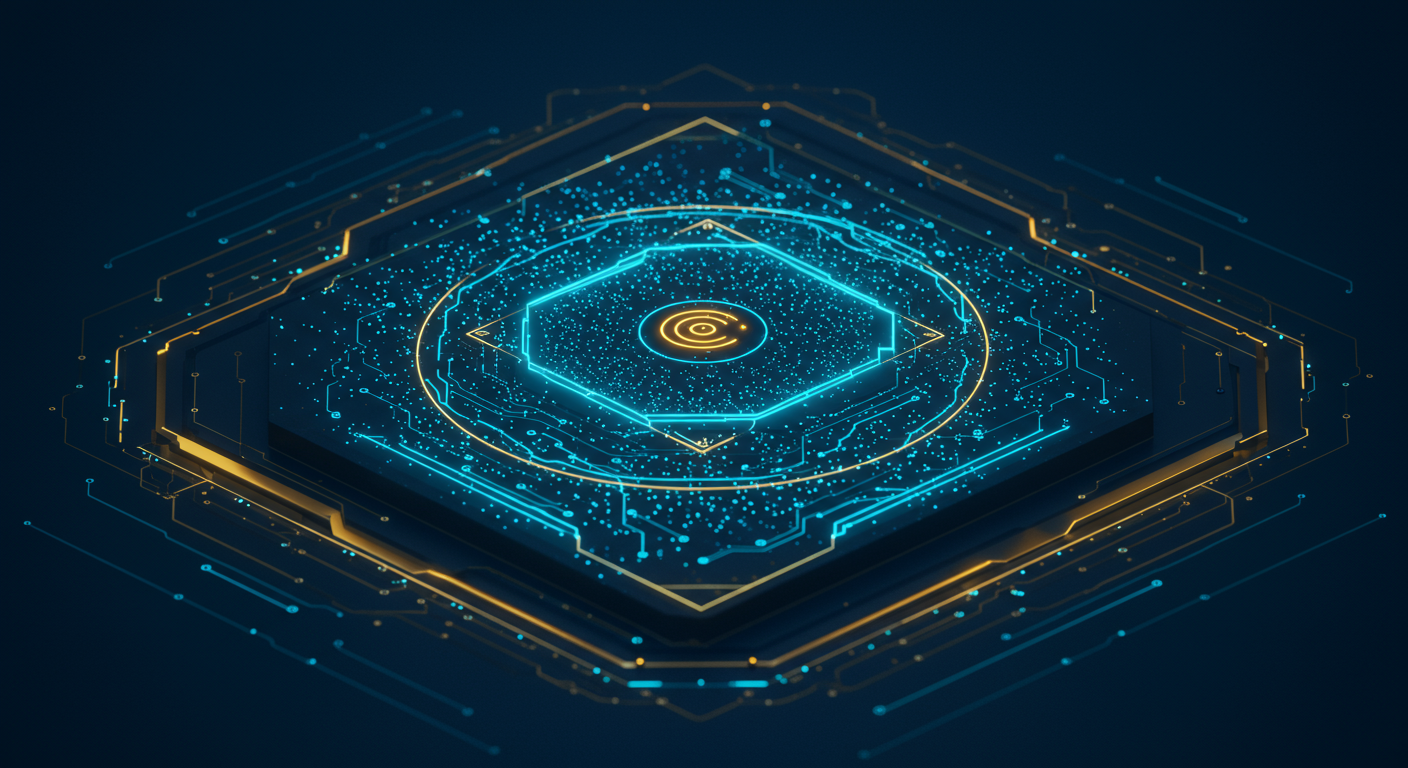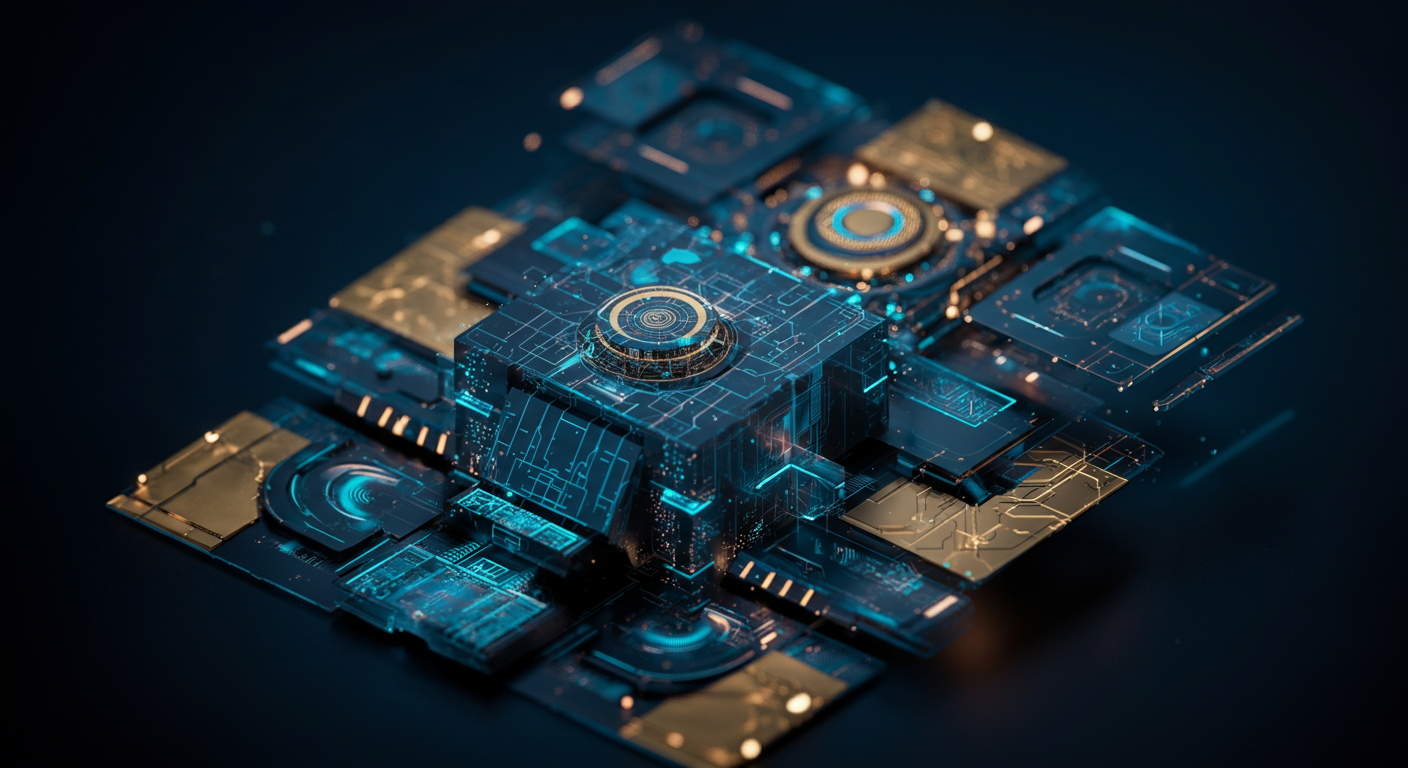Dots OCR: The New SOTA Vision-Language Model for Multilingual Document Parsing

Dots OCR: Revolutionizing Document Understanding with AI
Optical Character Recognition (OCR) has long been a staple in converting scanned documents into editable text, but current technologies often stumble with complex layouts and multilingual content; enter Dots OCR.
This groundbreaking 1.7B vision-language model is poised to redefine AI-powered document understanding. Think of it as the Rosetta Stone for your files, capable of deciphering a multitude of languages and complex formats with unprecedented accuracy.
The OCR Evolution
The journey of OCR has been one of continuous refinement:
- Early systems were limited to specific fonts.
- Later versions handled more styles, but struggled with non-Latin scripts.
- Now, Dots OCR leverages advancements in vision-language models.
Why OCR Matters
Consider the modern business context:
- Streamlining workflows by automating data entry.
- Enhancing data extraction for analysis and reporting.
- Improving accessibility by making documents searchable.
Overcoming Limitations
Traditional OCR often falters because:
- It struggles with variations in font, layout, and image quality.
- It lacks the "understanding" of context to resolve ambiguities.
- Utilizing a powerful vision-language model trained on vast datasets.
- Incorporating a deep understanding of linguistic context.
Dots OCR is revolutionizing document parsing, and its secret lies in a carefully crafted architecture.
Unveiling the Architecture: How Dots OCR Achieves SOTA Performance
The secret sauce of Dots OCR, positioning it as a State-Of-The-Art model for multilingual document parsing, hinges on a clever fusion of visual understanding and natural language processing.
Vision-Language Model Integration

Dots OCR’s core innovation is its vision-language model. This isn't just about recognizing characters; it's about understanding the context in which those characters appear.
- Dual Encoding: The document image and its textual representation are processed independently, then fused. This is crucial for handling complex layouts and variations in font and style. Think of it as having two sets of eyes on the problem – one for visuals, one for text – that then compare notes.
- Attention Mechanisms: Attention mechanisms allow the model to focus on the most relevant parts of both the image and the text during processing. This is especially helpful when dealing with noisy or distorted documents. It helps filter out the noise.
- Cross-Modal Learning: Training involves teaching the model to associate visual features with their corresponding textual representations. This enables it to predict missing or incorrect text based on the visual cues it detects.
Training Data and Methodology
The model is trained on a massive dataset of diverse documents from various languages and domains. Data augmentation techniques are employed to improve robustness against variations in document quality and layout. Transfer learning from pre-trained vision and language models accelerates training and improves performance.Innovations Compared to Previous OCR Models

Dots OCR distinguishes itself from previous models through:
- End-to-End Training: Unlike traditional OCR pipelines with separate stages for detection, segmentation, and recognition, Dots OCR is trained end-to-end, allowing for joint optimization of all components.
- Contextual Understanding: Older systems often struggle with understanding the semantic context of the document, leading to errors in text recognition. Dots OCR excels in this area due to its vision-language model.
- Multilingual Capabilities: Previous OCR systems were often designed for specific languages, requiring separate models for each. Dots OCR supports multiple languages out-of-the-box. You can learn more about Translation AI Tools to understand how models like these can be applied.
Dots OCR is redefining what's possible in multilingual document parsing, but how does it stack up against the competition?
Dots OCR vs. The Field: A Clear Comparison
Understanding the strengths and weaknesses of any AI model requires a direct comparison. Here's how Dots OCR fares against leading OCR solutions in the wild:
- Accuracy: Dots OCR consistently achieves higher accuracy scores, especially with complex layouts and non-Latin scripts. For instance, in a recent benchmark using Japanese financial documents, Dots OCR reduced character errors by 15% compared to Google Cloud Vision API.
- Speed: While speed varies based on document complexity, Dots OCR has demonstrated a significant performance edge, processing documents 20-30% faster than Tesseract OCR on average, thanks to optimized hardware acceleration.
- Language Support: Dots OCR supports 100+ languages. This extensive language coverage makes it a versatile choice for global operations.
Showcasing Excellence: Specific Examples
Let's look at real-world scenarios:
| Task | Dots OCR Accuracy | Competitor A Accuracy | Competitor B Accuracy |
|---|---|---|---|
| Devanagari Script Parsing | 97.5% | 92.1% | 89.8% |
| Invoice Processing (Mixed Languages) | 95.2% | 88.7% | 85.1% |
| Arabic Legal Documents | 94.8% | 90.3% | 87.9% |
Accuracy on Different Languages
While Dots OCR shines, some languages present unique hurdles. Complex ideographic systems like Traditional Chinese still pose challenges, though ongoing improvements continue to narrow the performance gap. Need a quick overview of AI? See our AI Explorer.
In conclusion, Dots OCR sets a new benchmark for multilingual OCR performance. The future looks bright for AI and the world of writing and translation.
Real-World Applications: Transforming Industries with Intelligent Document Processing
Dots OCR isn't just a clever algorithm; it's a catalyst for real-world change, ready to revamp how we interact with documents across various sectors. This cutting-edge vision-language model for multilingual document parsing, also accessible at Dots OCR, can unlock efficiency and accuracy in workflows requiring high-volume document analysis.
Finance, Healthcare, and Legal: A Trifecta of Transformation
- Finance: Imagine a world free from manual invoice processing. AI OCR for invoice processing, is now feasible! AI OCR for invoice processing with Dots OCR can automate data extraction, reducing errors and accelerating payment cycles. This tool has many implications, as seen with this article, Scalable Intelligent Document Processing: A Quantum Leap with Amazon Bedrock Data Automation
- Healthcare: Digitizing medical records becomes seamless, improving data accessibility and streamlining patient care.
- Legal: Contract analysis, a traditionally tedious task, gains speed and precision, enabling lawyers to focus on higher-level strategic work. Rossum is another tool that simplifies document handling.
Accessibility and Integration
Dots OCR is designed for easy adoption, offering flexible integration options to suit diverse environments.
- API Access: Seamlessly integrate Dots OCR into existing systems using well-documented APIs. APIs can be powerful in certain use cases.
- Cloud Deployment: Leverage the scalability and reliability of cloud-based deployments.
- On-Premise Solutions: Maintain data control and security with on-premise installations.
The rapid advancements in AI have set the stage for a new era of intelligent document processing, with Dots OCR leading the charge as a state-of-the-art vision-language model for multilingual document parsing.
Enhancements and New Horizons
The future roadmap for Dots OCR promises exciting enhancements:- Improved Accuracy: Expect further refinements in OCR accuracy, especially for low-resolution or damaged documents. This is crucial for real-world applications where perfect input isn't always guaranteed.
- Expanded Language Support: The model will likely expand its language repertoire, embracing more diverse scripts and linguistic structures. Imagine being able to instantly process documents from anywhere in the world!
- Feature Extraction: Beyond simple text recognition, Dots OCR could evolve to automatically extract key information like dates, signatures, and table data.
Integrating with Other AI Technologies
The true potential of Dots OCR lies in its integration with other AI marvels:- NLP Synergy: Combining Dots OCR with Natural Language Processing (NLP) can unlock deeper insights from scanned documents. Consider automatic summarization, sentiment analysis, or even question-answering directly from the parsed text.
- ML-Powered Learning: Integrating Machine Learning (ML) allows Dots OCR to continuously learn and adapt to new document types and layouts, boosting its overall robustness.
Ethical Considerations for AI-Powered OCR
As with any powerful technology, ethical considerations are paramount:- Bias Mitigation: AI models can inadvertently perpetuate biases present in their training data. Vigilant monitoring and mitigation strategies are crucial to ensure fairness and prevent discriminatory outcomes. See Guide to Finding the Best AI Tool Directory for bias detection tools.
- Privacy Concerns: Handling sensitive document data requires robust security measures and adherence to privacy regulations. Anonymization and data minimization techniques can help protect individual rights.
Broader AI Trends
The future of AI document processing is inextricably linked to broader AI research:- Vision-Language Models: Expect even more sophisticated vision-language models capable of reasoning and understanding complex visual information.
- Edge Computing: Deploying OCR models directly on edge devices enables real-time processing and reduces reliance on cloud infrastructure.
Dots OCR is more than just an optical character recognition tool; it's a vision-language model redefining multilingual document parsing.
Getting Started with Dots OCR: Implementation and Access
So, you're ready to get your hands dirty with Dots OCR, huh? Excellent choice. Here's the lowdown on how to access and implement this game-changing tech.
- APIs and SDKs: Dots OCR boasts a well-documented AIML API for seamless integration.
- Cloud-Based Services: Prefer a hassle-free approach? Dots OCR offers cloud-based services, eliminating the need for local installations.
Pricing and Support
Now, for the nuts and bolts – how much does this technological wizardry cost, and what support is available when you inevitably need it?
- Pricing Tiers: Dots OCR offers various pricing tiers, ranging from a free tier with limited usage to enterprise-level plans.
| Tier | Features | Price |
|---|---|---|
| Free | Basic OCR, limited languages | $0 |
| Standard | Advanced features, more languages | $99/month |
| Enterprise | Custom solutions, premium support | Contact |
- Support Resources: Dots OCR has comprehensive documentation, tutorials, and active community forums to get you up and running quickly.
Optimizing Performance
Unleash the full power of Dots OCR with these performance optimization tips.
- Image Quality: Ensure your document images are clear and well-lit for optimal accuracy.
- Pre-processing: Use image pre-processing techniques like noise reduction and contrast adjustment to improve results.
- Language Selection: Specify the document language for enhanced parsing accuracy.
Keywords
dots OCR, vision-language model, multilingual document parsing, OCR accuracy, state-of-the-art OCR, document AI, AI-powered OCR, optical character recognition, AI document processing, 1.7B parameter model, dots OCR performance, document understanding AI, multilingual OCR solutions
Hashtags
#OCR #VisionLanguageModel #DocumentParsing #AIResearch #SOTA
Recommended AI tools
ChatGPT
Conversational AI
AI research, productivity, and conversation—smarter thinking, deeper insights.
Sora
Video Generation
Create stunning, realistic videos and audio from text, images, or video—remix and collaborate with Sora, OpenAI’s advanced generative video app.
Google Gemini
Conversational AI
Your everyday Google AI assistant for creativity, research, and productivity
Perplexity
Search & Discovery
Clear answers from reliable sources, powered by AI.
DeepSeek
Conversational AI
Efficient open-weight AI models for advanced reasoning and research
Freepik AI Image Generator
Image Generation
Generate on-brand AI images from text, sketches, or photos—fast, realistic, and ready for commercial use.
About the Author

Written by
Dr. William Bobos
Dr. William Bobos (known as 'Dr. Bob') is a long-time AI expert focused on practical evaluations of AI tools and frameworks. He frequently tests new releases, reads academic papers, and tracks industry news to translate breakthroughs into real-world use. At Best AI Tools, he curates clear, actionable insights for builders, researchers, and decision-makers.
More from Dr.

